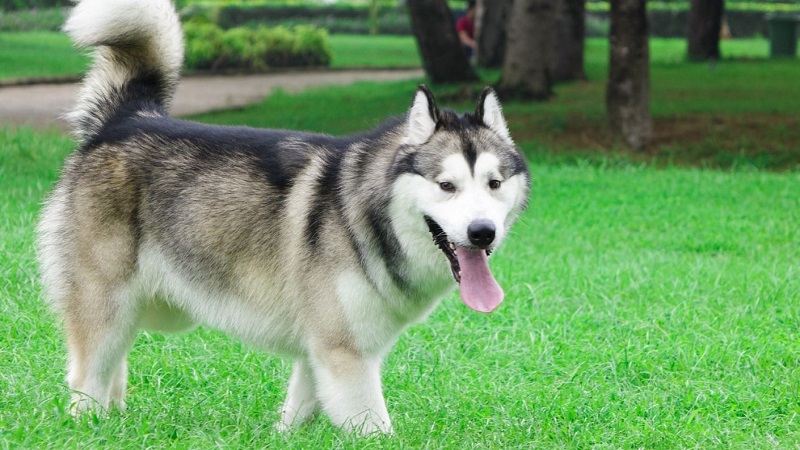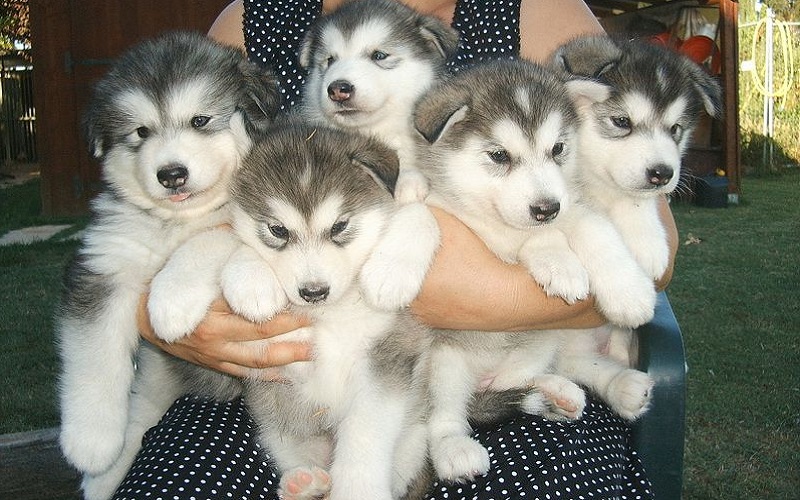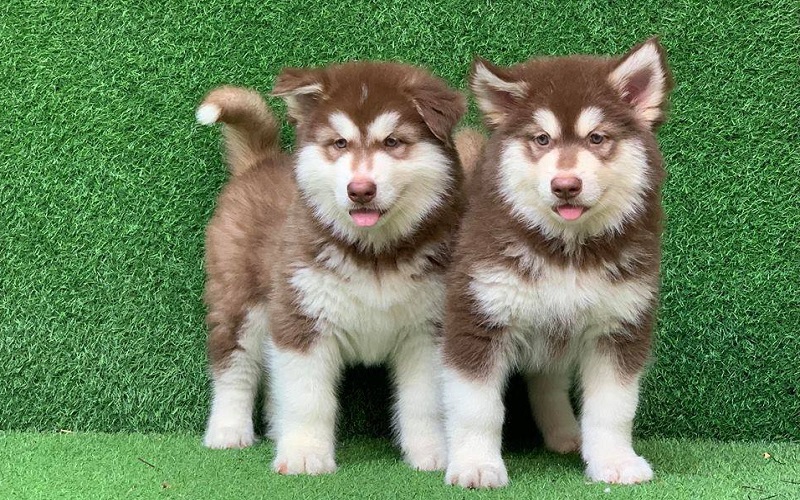The Alaska dog breed is gaining popularity in Vietnam due to its large and adorable appearance. However, knowing how to properly care for an Alaska dog is not common knowledge. This article will be a helpful guide if you’re considering welcoming an Alaska puppy into your home.
1 What is an Alaska Dog?

The Alaska dog, also known as the Alaska Malamute, is a breed that was discovered by the nomadic Eskimos in Alaska for their exceptional ability to move and pull sleds. Despite their large size, Alaska dogs are intelligent, sociable, and come in a variety of coat colors such as gray and white, or black and white.
Price range for purebred Alaska dogs
The price of a purebred Alaska dog typically ranges from 10 to 20 million VND (Vietnamese Dong). However, prices may vary depending on the time and region. The American Kennel Club (AKC) categorizes Alaska dogs into three sizes, from largest to smallest: Standard, Large Standard, and Giant. The most common types are the Alaska Giant and Standard. The price breakdown is as follows:
-
Giant-sized Alaska dogs: Priced from 15 to 17 million VND. Pink and reddish-brown dogs can cost up to 18 to 22 million VND (black and white or gray and white).
-
Standard-sized Alaska dogs: These are more affordable, ranging from 14 to 16 million VND (for pink dogs). Other colors range from 8 to 12 million VND.
Note: Male Alaska dogs are usually 1 million VND cheaper than their female counterparts.
2 Is it Difficult to Care for an Alaska Dog?
Caring for an Alaska dog is not inherently difficult, but as they originate from colder climates, there are some specific considerations regarding temperature, diet, and habitat to keep in mind. Here are some important tips to follow:
Climate Conditions

Alaska dogs typically have a thick double coat to keep them warm in cold climates. However, Vietnam’s tropical monsoon climate with its high humidity and relatively high temperatures can be challenging for them. It’s crucial to monitor their body temperature to prevent heat stroke.
Heat stroke can cause mild symptoms such as vomiting, or more severe consequences like seizures and loss of consciousness. During hot weather, it’s recommended to keep them in an air-conditioned room if the outdoor temperature exceeds 30°C. Additionally, daily bathing and minimizing exposure to extreme heat are essential.
Vaccinations
 Regular health check-ups and vaccinations are essential for your Alaska dog.
Regular health check-ups and vaccinations are essential for your Alaska dog.
Regardless of the breed, all dogs require good health. Therefore, it’s crucial to vaccinate your Alaska dog and take them for regular health check-ups. For puppies aged 2 to 4 months, more frequent health check-ups and vaccinations are necessary.
Hygiene
 Maintaining hygiene is important for your Alaska dog’s health and the beauty of their coat.
Maintaining hygiene is important for your Alaska dog’s health and the beauty of their coat.
Whether it’s an Alaska or any other dog breed, hygiene is essential for their overall health and the condition of their coat. Clean their living area and wash their food and water bowls daily. Maintaining the cleanliness of their living space and dining utensils will help reduce the risk of your dog developing health issues.
Additionally, brushing your dog’s teeth is crucial to prevent dental problems. Regular baths can also help prevent skin infections and fungal issues.
Exercise
 Alaska dogs love to stay active, and a lack of exercise can lead to boredom and destructive behavior.
Alaska dogs love to stay active, and a lack of exercise can lead to boredom and destructive behavior.
As dogs bred for pulling sleds, Alaska dogs thrive on physical activity. If they don’t get enough exercise, they may become bored and destructive. You can take them for morning jogs, let them run alongside your bicycle in a park, or simply walk them regularly to maintain their agility and strength.
Diet
 Provide a diet rich in protein, but not as high as that required by Huskies.
Provide a diet rich in protein, but not as high as that required by Huskies.
Alaska dogs require a protein-rich diet, but not as intense as the diet of a Husky. You can either prepare their meals yourself or opt for commercially available dog food with the right nutritional balance. It’s best to alternate between a commercially prepared meal and a home-cooked meal.
For commercially available food, choose pellet-shaped food for adult dogs and powdered food for puppies under four months old to aid digestion and absorption. When it comes to fresh food, Alaska dogs tend to dislike spicy dishes but enjoy pork offal.
3 How to Care for an Alaska Dog
For Dogs Aged 1-2 Months
 Alaska dogs at 1-2 months old require extra care as they are more susceptible to illnesses.
Alaska dogs at 1-2 months old require extra care as they are more susceptible to illnesses.
At this stage, their bodies are still developing, making them more vulnerable to health issues. Pay close attention to vaccinations and maintain impeccable hygiene. Feed them small meals throughout the day, consisting mainly of rice mixed with ground meat, soft food, and two servings of warm milk.
For Dogs Aged 3-6 Months
 As your Alaska dog grows, you can adjust their diet to include harder food to encourage chewing.
As your Alaska dog grows, you can adjust their diet to include harder food to encourage chewing.
During this phase, their bodies are adjusting to their diet. You can gradually introduce harder food to help them develop good chewing habits. Additionally, supplement their meals with digestive enzymes from time to time to prevent gastrointestinal issues.
For Dogs Aged 6 Months and Older
![]()































